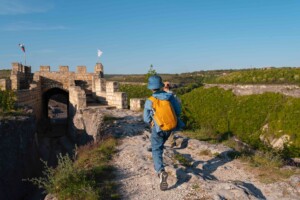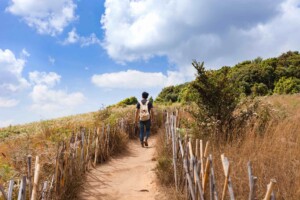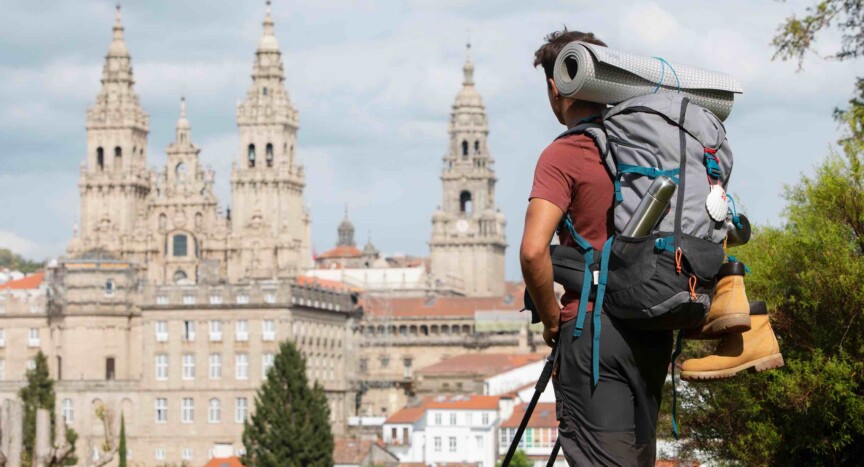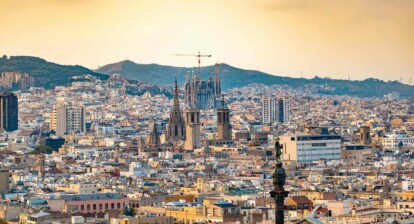Thousands of kilometres of paths, traveled by millions of pilgrims, all with the same goal—Santiago de Compostela. It’s one of the most famous pilgrimages in the world, leading all the way to the northwestern tip of Spain. Do you know what the Camino is? Have you heard about it?
What exactly is the Camino de Santiago?
The Camino de Santiago, also known as the Way of St. James, is a network of pilgrimage routes leading to the tomb of Saint James in the cathedral of Santiago de Compostela in northwestern Spain.
This centuries-old pilgrimage path, stretching across Western Europe, attracts adventurers, spiritual seekers, and culture enthusiasts alike. This scenic route, known as “the Camino,” has a magnetic pull that draws pilgrims from all over the world.
Pilgrims, known as “peregrinos” travel hundreds of kilometres each year, making their way to the city of Santiago in northern Spain. They carry backpacks with all their essentials. Beyond the physical challenge, the Camino represents a profound spiritual journey, offering participants a chance to connect with history, nature, and most importantly, themselves.
There’s more than one
There are several main pilgrimage routes that lead to Santiago.
- Camino Francés: The most popular route, approximately 780 kilometers long, starts in France and ends in Santiago de Compostela.
- Camino Portugués: This route starts in Portugal, usually from Lisbon or Porto, and is the second most popular route.
- Camino del Norte: A route that runs along the northern coast of Spain.
- Camino Primitivo: The oldest route, starting from Oviedo, and considered the most challenging due to its terrain.
- Via de la Plata (Silver Route): This route starts from Seville in southern Spain.

Source: Freepik.com
How long does it take?
The duration of the Camino de Santiago pilgrimage depends on various factors, such as the specific route chosen, the physical condition of the pilgrim, their walking pace, and the number of days planned for rest and sightseeing. Pilgrims also need to consider the weather, which can often extend and complicate the journey.
The duration of each route is very individual. On average, however, the Camino takes about a month. One of the longest routes, the Via de la Plata (Silver Route), can take up to two months to complete.
Not every pilgrim can afford to spend two months a year on this pilgrimage, so shorter routes, which have developed from the five main routes, have become popular. For example, the Camino Inglés (English Way) takes about a week to complete, while the Camino Finisterre requires only 5 days.
Facts you might not have known about the Camino
- La concha (The Scallop Shell): The scallop shell of Saint James is the symbol of the pilgrim’s journey. Pilgrims follow these painted shells along their path, ensuring they stay on the right route.
- Los albergues: These are modest hostels where pilgrims stay overnight. Their daily route typically leads from one albergue to another, where they can wash their clothes if needed and spend the night in simple beds. Pilgrims do not expect luxury.
- Stamps: At the end of each day, pilgrims can find a place in the local church to receive a stamp for their journey. These stamps are collected in a travel diary, which they purchase at the start of their pilgrimage.
- UNESCO: Some Camino de Santiago routes are listed as UNESCO World Heritage Sites, including the French Way (Camino Francés) and the Northern Way (Camino del Norte).
- Compostela: This is the certificate that pilgrims receive after completing at least 100 kilometers on foot or 200 kilometers by bike to Santiago de Compostela.
- Crowds: In 2022, more than 400,000 pilgrims completed the journey. The Camino is gaining popularity each year, and it is estimated to attract even more tourists in the future.

Source: Freepik.com
The journey is a unique personal experience for everyone, and pilgrims often speak of the spiritual or inner changes this path brings. Whether you embark on this journey alone or with loved ones, you will surely find what you are searching for. Or at least, discover how to achieve it. During the endless kilometers your feet will traverse, you’ll give your mind the perfect space for deep reflection.




